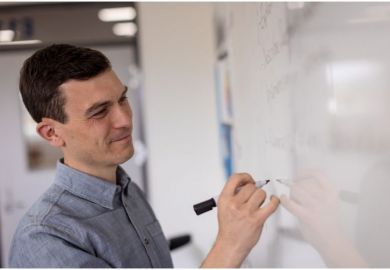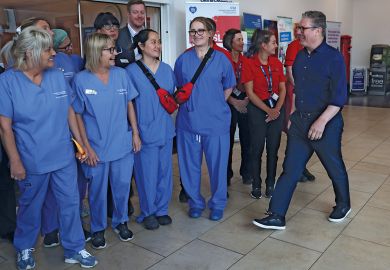The natural philosopher, said Robert Hooke, author of the stunning Micrographia , needs "a sincere hand, and a faithful eye, to examine, and to record the things themselves as they appear". Three hundred years later, the methods of capturing images have developed in ways Hooke never imagined but they still have the dual aspect he exploited so skilfully.
Felice Frankel aims to help Hooke's successors. Part-manifesto, part-display, part-manual, her book offers instruction and inspiration in image management, in the best sense of the word. She is concerned less with the technical side of photography, although the technicalities are conveyed succinctly when necessary, as with the things to think about when framing and selecting images.
The book is designed for practical use, but it is also a fascinating guide to how scientific images can be more than a mere registration of phenomena.
While to be classed as scientific images must be realistic in crucial respects, there is always plenty of scope for artful choice.
Frankel's title echoes Edward Tufte's classic Envisioning Information , the first of his trilogy of fine books on information graphics, and the book shares many qualities with Tufte's work. In particular, it is designed with such care by Stuart McKee that it is well on the way to being an art object as well a lab handbook. All the principles - of sample preparation, lighting, focus and composition - are illustrated with well-chosen images, usually comparing effective with less well-realised examples. Many photos are beautiful in their own right.
That said, although in its chosen range the book is as useful as it is handsome, its scope is restricted. Frankel sticks to her own practice, covering things that can be photographed with standard cameras, attached to optical microscopes if necessary.
There is a brief introduction by Phyllis Morrison on the history of scientific images that mentions a wider range of techniques. But although digital photography gets a few asides, the discussion is almost all about film. And there is almost nothing here about electron microscopes or their higher-resolution successors, nothing about telescopes linked to charge-coupled devices, about satellite images of the earth, about nuclear magnetic resonance or positron emission tomography scans, or about a host of other computer-realised images from particle tracks to protein structures. Nothing, in fact, about the majority of present-day scientific images.
This is a shame, if only because there is much to be said about the wealth of techniques used to create such images, and the ways we are invited to interpret them after they have been processed, cleaned up and otherwise enhanced or manipulated.
Frankel very properly emphasises the need to protect "the integrity of the information" when playing around with new photographic points of view. She cautions against enhancing images without thinking carefully about exactly how the change produced relates to the original data. Although much of what she says about the pros and cons of colouring, inversion, deletion or combining images applies across the board, it would be nice to see it related to a wider range of examples.
However, within its chosen limits this is as good a workbook as any you will find. It comes with a short set of exercises and a meticulous visual index giving technical details of all the images. Many scientists could apply its advice to good advantage to present "things themselves as they appear" by doing what Frankel recommends - improving their image-making by learning how to look.
Jon Turney teaches science communication at University College London.
Envisioning Science: The Design and Craft of the Science Image
Author - Felice Frankel
ISBN - 0 262 06225 9
Publisher - MIT Press
Price - £36.95
Pages - 328
Register to continue
Why register?
- Registration is free and only takes a moment
- Once registered, you can read 3 articles a month
- Sign up for our newsletter
Subscribe
Or subscribe for unlimited access to:
- Unlimited access to news, views, insights & reviews
- Digital editions
- Digital access to THE’s university and college rankings analysis
Already registered or a current subscriber?



